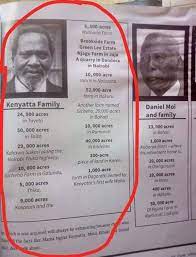WHO WAS MUNDU?
On page 4 of the East African Red-Book (1925), sits a column by William Schoff, a Greek writer (also author of Periplus of Erythraean Red Sea). In his sojourn to the southern parts of Egypt, in 60AD, he writes about ‘The Market Town of Mundus’. Prof Bethwel Ogot (History of Southern Luo Vol 1, 1967) and P.W Makila (An Outline of Babukusu of Western Kenya, 1976) strongly suggest, the market was one of earliest gathering of descendants of Mundu.
Mundu was the great ancestor of Babukusu, from whom there have arisen more than 200 clans and sub-clans in the Bukusu sub-nation. Contrary to popular belief, Mundu was not directly created by God and put in earth like the Biblical Adam. Such a claim is grossly erroneous, misleading and wrongly founded.
While little is known about Mundu, it is evident that he spoke a Bantu language and together with his wives, sons and daughters, lived among other non-Bantu communities. It means that Mundu was not the first person on earth contrary to a section misleading Bukusu oral tradition accounts.
Mundu had two sons: Kundu (or Kintu who became the ancestor to Baganda and Basoga) and Masaaba. While Kundu drifted southwards to present-day Lake Kioga in Uganda, Masaaba remained with his ageing father Later Masaaba gave birth to Mwambu (born in a cave, later known as Mukisu), Mubukusu and Seela (only daughter), out of the Womb of Namurwa (a beautiful bride he won from Barwa - Nilo Hamites). The interesting chronology of Mundu will be narrated another time.
LIFE AT ESIBAKALA
The Babukusu of Western Kenya first originated from a place only remembered today as Esibakala. It was during the first century AD. Esibakala was the place where Mundu resided along with other communities. Today, it is estimated that Esibakala lies in Southern Egypt and Northern Sudan.
Esibakala is remembered to be covered by endless plains having few trees and shrubs. The soil was however very fertile and Mundu’s people (Babayi) practiced agriculture fairly well.
They kept animals such as chicken, cattle, goats, and sheep. Babayi even domesticated dogs for security and hunting. Although with seasonal rain, Babayi grew finger millet, sorghum and eleusine (relating closely to millet) as well other indigenous vegetables. Maize or nasimia, was unheard of, introduced in later by probably the pink man.
Soon, life at Esibakala would turn sour due to two reasons. First, the weather became unpleasant. Rain became scarce and droughts frequented. Animals continued to die of starvation and dry soils could not effectively support crop growing. With water becoming rare, food security was endangered.
Secondly, Babayi suddenly became neighbors to dangerously preying communities. There appeared brown people who started terrorizing the people. They could raid their bibiaki (crop stores) and kamatala (cattle meadows). They would kidnap women and children and make away with livestock. The brown people are believed to be North African Arabs who had come from great desert (Sahara) of the North West. As life became no longer bearable, the Mundu’s people decided to move further downwards.
SOJOURN INTO ESIRENDE
Since weather and enmity conditions made life at Esibakala unbearable, the community sought solace at Esirende in about 800 AD. Esirende was a wet place where the soil was damp all the year round. The people rejoiced since the agricultural activities would go on. Today, several places in Bukusu land have adopted the name Sirende which means a wet place. Indeed, crop planting and animal rearing flourished and the community multiplied.
Cattle grass was abundant given plenty of rainfall. Chingoling’o, kamalasile, bananas, arrow roots, and pumpkins made the tribes people strong. Indigenous plants for treatment of ailments were readily found. By now, Mundu was long gone: Masaaba and Mukisu were well grown, and raising their own families. It is estimated that Esirende lies in the Savannah region, South of Sudan.
However, after some time, Babukusu discovered that life at Esirende could not suit them well. Babayi had come to live amidst marauding Ethiopians (Nabibia – the Iron mongers) as well as Nilo Hamitic tribes such as Barwa Balaku, Basawinja and BaMaasai. Barwa did no farming and could constantly raid Bukusu animals and crops. On the other hand, just like the Karamocha (Karamojong of Buganda), Nabibia walked around naked like swarms of bees robbing Bukusu. It was a time of conflict, only characterized by few peaceful times such as where Bukusu adopted circumcision from Barwa. Truly, Babayi suffered economically and socially, People died, cattle heads shrunk and the people could not cope up with growing of crops.
Soon the Babayi Elders convened and made the decision. Moving into Nabiswa- The Land of Anthills













Comments